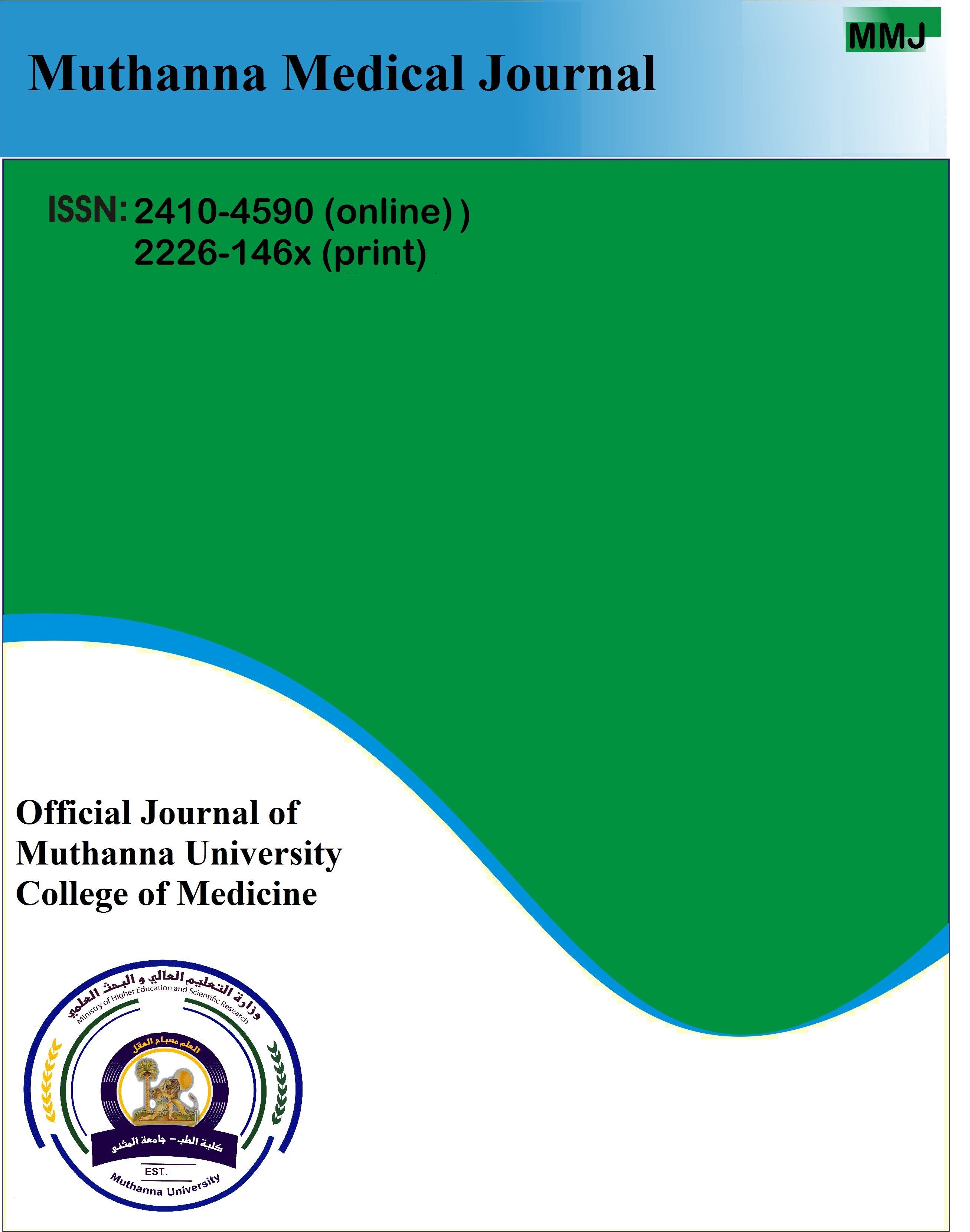Muthanna Medical Journal
Volume 10, Issue 1, 2023 Page 1-13
http://dx.doi.org/10.52113/1/1/2023-1-13
Karima AL Salihi 1*, Mohammed Hassan Younise 2, Ali Mkns Afat Ali 3, Alaa Jaber Ali 4, Zahra Hussien Mahdi 4
Correspondence author: kama-akool18@mu.edu.iq
¹Department of Internal Medicine/College of Veterinary Medicine/Al Muthanna University/Iraq
2 Clinic of public health. Al- Hussain teaching hospital
3 Alkunooz university college / Dept of clinical laboratory technologies
4 Department of Biology/College of Education for Pure Sciences/Al Muthanna University
Received 01 October 2022, 30 December 2022, Available online 09 January 2023.
Copyright © 2023 KA. This is article distributed under the terms of the Creative Commons Attribution License http://creativecommons.org/licenses/by/4.0), which permits unrestricted use, distribution, and reproduction in any medium, provided the original work is properly cited
Copyright © 2023 KA. This is article distributed under the terms of the Creative Commons Attribution License http://creativecommons.org/licenses/by/4.0), which permits unrestricted use, distribution, and reproduction in any medium, provided the original work is properly cited
Abstract
Diarrhea is the second leading cause of children’s death under five years of age worldwide. The most common microbiological causes of gastroenteritis vary by age group, geographic region, and type of diarrhea. This study designed to identify the bacterial causes of children’s diarrhea under two years of age in Samawah /Al-Muthanna Governorate. Out of 84 patients, 21 sterile stool swabs were collected from children suffering from diarrhea in the Maternity and Children Hospital in Samawah for the period from 1 to 31 December 2021. Samples were cultured on selective diagnostic culture media. Antibiotic sensitivity test was performed for bacterial isolates using discs diffusion test. Out of 84 total hospitalized child, there were 61 (72.61%) children with diarrhoea. Whereas, the percentages of other diseases were 2% (2.38), 16 (19.04), 3 (3.57%), 1% (1.19%), 1 (1.19%) and 1% (1.19%) for jaundice, bronchitis, dyspnea and asthma, suckling interruption, hypoglycemia and pneumonia, respectively. According to age, the highest percentage of diarrhea 24(39.344%) was recorded in children less than one month. Moreover, the number and percentages of diarrhea at ages 2, 3, 4, 6, 5 7, 8, 9, 10, 11, 12 and 24 months were as follows: 5 (8.196%), 3 (4.918%), 4 (6.557%), 4 (6,557%), 2 (3.278%), 4 (6.557 %), 0.%, 3 (4.918%), 3 (4.918 %), 0%, 6 (9.83%) and 3 (4.918%) respectively. The total percentage of bacterial isolation was 100%, that comprised 38.10%, 14.29%, 4.76 %, 9.52 %, 23.81%, and 9.52% for E. coli, Salmonella typhi, Salmonella typhimurium, Klebsiella, Shigella sp., and Proteous sp. respectively. In conclusion, this study approved that multiple-drug resistant, gram-negative enterobacteria were the causes of diarrhea in children under-age of two years.
Keywords: Multiple-drug resistant, Children, Diarrhea, E. coli, Iraq, Shigella